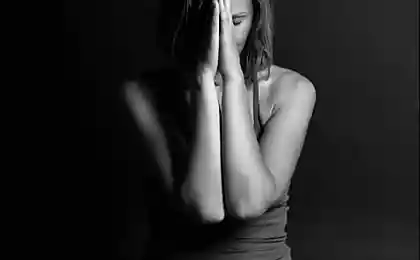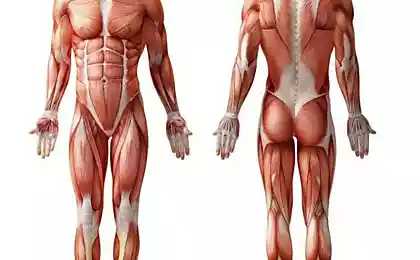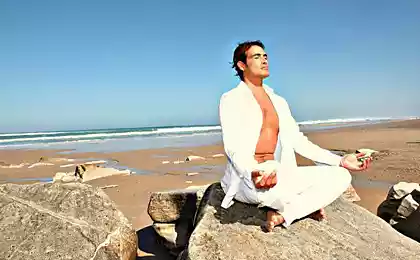829
Technique Wellness breathing method Buteyko
The breathing technique Buteyko: strong-willed liquidation of deep breathing (VLGD)
The technique for shallow breathing has been developed in Novosibirsk by Dr. Konstantin Pavlovich Buteyko in the 1960-ies. Its basic principle is that modern man is "over-exercised" in deep breath, and why does the majority of diseases associated with various spasms due to lack of carbon dioxide in the body. This primarily refers to bronchial asthma.
According to Buteyko, "propaganda" deep breathing causes great harm. The logic in his words is undeniable. "How would you react to a doctor who would tell you to "Eat more"? says Buteyko. – Probably would have considered him crazy. Why any one function of the body must suddenly increase?"
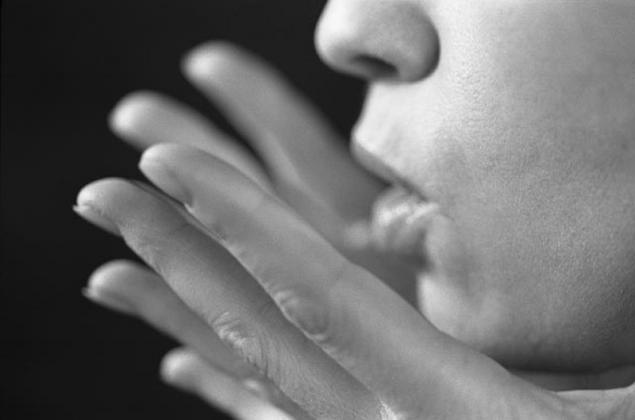
As with food, the breath also we must distinguish between two levels: respiration as the process that takes place between the organism and the environment, and cellular respiration, that is a purely internal process. How would and what man would not breathe, oxygen in the red blood cells can still be high 96-98 %. In all other cells of the organism contains only 2 % oxygen. In the air (any) oxygen is more than enough – 21 %.
But in the cells must contain up to 7% carbon dioxide, and in air it is only 0,03 %.
With a deficit of carbon dioxide in the blood oxygen is so strongly connected with hemoglobin that is not supplied to the cells and tissues. The asthmatic oxygen, despite the fact that oxygen in your blood even more than a healthy person. Asthma attack is (like almost any symptom of any disease) adaptive response of the body. The body "wants" to breathe, because if the content of carbon dioxide in the cells falls below 3%, he will die. Asthma attack is a forcible breath, as a result of which the content of carbon dioxide increases dramatically.
K. P. Buteyko and his colleagues have developed a method by which each person can determine the depth of your breathing and, therefore, the degree of health or illness. The method consists in the following. Sit on a chair with a straight back, do not strain and breathe as you breathe normally, no deep breaths. Make a normal exhale and stop breathing, noticing the time on the tick of the clock hours. The longer a person can withstand without voltage this pause, the "normal" he breathes. This files most often have "more or less healthy" people, this pause is in the range of 15 – 20 seconds patients it less.
But the really healthy can consider himself the only one who is without stress delays 60 seconds and without any discomfort.
Currently, the indication for the use of wlgd is a syndrome of hyperventilation – deep breathing and CO2 deficiency in the lungs.
Before you start treatment with this method, it is necessary to conduct a test with deep breathing. The patient with bronchial asthma during an asthma attack is encouraged to breathe very shallow, with pauses lasting 3 to 4 seconds after each exhalation. According to the observations of K. P. Buteyko, a maximum of 5 minutes of choking is reduced or disappears. Then offer the patient again to deepen the breath. If, in response to an in-depth breathing condition is worsening, while shallow breathing is improved, then the test with deep breathing is considered positive. Such patients can be cured by the method VLGD.
Breathing method
First, you need to understand what "normal breathing". Normal breathing, Buteyko says, "not seen and not heard". Breath – slow, maximum surface, lasting 2-3 seconds; exhale calm, complete, for 3 to 4 seconds; after you exhale, be sure a respiratory pause of 3-4 seconds, then inhale, etc. the Frequency of normal breathing 6-8 breaths per minute.
To learn shallow breathing, need to practice at least 3 hours a day, first at rest, then in motion. Training is that the effort will reduce the depth of inhalation, breathing "surface," or, in the words of the first patients Buteyko, "samoderzhets".
As for the frequency of respiration, as well as auto pause (required phases of a normal breath), here's what he says about it himself K. P. Buteyko: "the First cardinal error of our patients – they begin to rarely breathe: inhale-exhale, then hold your breath longer hold this pause and deepen your breath. Not to be confused with the maximum pause with automatic. The breathing frequency is strictly individual, it depends on the gender, age, weight, etc. and usually not controlled. We do not allow patients to think about it, otherwise they will be implicated. Respiratory rate, we only need to measure the carbon dioxide content – it, just like the maximum pause, shows how much carbon dioxide in the blood...
The last indicator – automatic pause. This is a pause that occurs even in normal breathing of people in sleep, and all animals. It is easy to show animals. Here is a dog or a cat is lying, breathing normally (no dyspnea) — will keep an eye on her breathing. On the exhale, the chest fell – pause, then inhale, small exhale, pause. This is normal breathing. This pause – stop breathing – it is a stay easy and the possibility of gas exchange. This is a normal pause that occurs automatically, independently of our consciousness. "Globalisasi" people do not, so they think this is not necessary. They need to reduce the amplitude and the pause will come itself when the breath will be reduced..." (From the transcript of the lecture by K. P. Buteyko, read them at the University of Moscow in December 1969)
Practicing according to the method VLGD, periodically should do the above test to the maximum pause (breath-hold), as the only way to control the correct execution of the technique.
Modern medicine has centuries of experience. She originates from such well-known figures as Hippocrates and Avicenna. Their contribution to the "piggy Bank" of medical theory and practice is huge. Time passed, changed the description of diseases and the approach to their treatment. Many diseases that were considered incurable, changed their status and began to succumb to the therapy. But there are diseases to which medicine remained powerless: asthma, high blood pressure, allergies, angina, etc. In the best case, the doctors just "hooked" patient on medication and seek temporary relief. Patients looking for a way out themselves. Input are all methods, traditional and non traditional. Such non-traditional methods of treatment of chronic and difficult treatment of disease is a breathing method Buteyko, Konstantin Pavlovich. It has nothing to do with breathing exercises, and focused only on the change in the depth of breathing during exercise.
In the 60-ies of the last century, the Soviet scientist K. P. Buteyko has made a discovery that turned the notion of reserve capacity of the organism in the treatment of chronic diseases. It lies in the fact that when the disease disturbed the balance of oxygen and carbon dioxide in the body. K. P. Buteyko believed that people forgot "how to breathe correctly". He proved that the deeper his breathing, the movement, the more severe the disease. Conversely, the breath of the bole surface, the faster the recovery. The fact is that deep breathing from the body to excreted carbon dioxide, this leads to spasm of cerebral vessels, bronchi, intestine, biliary tract, decreases the supply of oxygen to the tissues. Practice breathing method Buteyko gives very good positive results in such situations with regular exercises and always under the supervision of a physician.
Allow the entire method, I will not, written about him the whole book. It is described how to train the Buteyko breathing exercises for this. Will mention only some basic aspects that everyone should know the patient, who decided to take care of your health. Consider, what's the point concludes the breathing method Buteyko's scheme, the technique of its application.
• we need to prepare for systematic training for a long time;
• learn once and for all, the lifestyle will need to change completely;
• with regard to a life of drugs, their dosage is reduced gradually;
What is the method?
From the point of view of K. P. Buteyko only because of the diaphragm, the person may not breathe deeply, gradually decreasing depth. You should breathe only through the nose, then it will be correct. Breath is necessary to do a very small, quiet and not noticeable, while the abdomen and chest should not rise. Through this breath the air, falls just to the collarbone, and below them is carbon dioxide. The air needs a little drawn into themselves, in order not to suffocate. A person must create the impression as if he is afraid to smell. Breath should last no longer than 2-3 seconds and exhale over 3 to 4 seconds followed by a pause of about 4 seconds. The volume of the exhaled air should not be large. Here is the diagram of the breathing on Buteyko.
Breathing technique Buteyko
• sit on a chair and relax completely, a look of silent lift above the line of the eye;
• relax your diaphragm and shallow breathing until a feeling of lack of air in the chest;
• continue respiratory movements in this rate and not increase it for 10-14 minutes;
• if you have the desire to breathe in deeper, you can only slightly increase the depth of respiration, but in any case the entire breast;
• with proper training, You will feel the beginning heat all over the body, then there will be a feeling of heat and the irresistible desire to breathe deeply, to fight this need only by relaxing the diaphragm;
• out of the workout should gradually increasing depth of breathing;
The duration of one workout and its frequency depend on the condition of the patient and the degree of respiratory failure. It can only identify a doctor who is familiar with the practice and theory, how to apply breath, the Buteyko method, because the method has contraindications.
As determined by the degree of respiratory failure?
Measured by the ratio of the "control pause" and pulse. This will need a watch with a second hand. Count your pulse, then for ten minutes to align the breathing. Then sit straight, take a good posture and straighten your shoulders, pull your stomach. Then take a free breath, after it happens independent of the exhalation. At the same time look fix the position of the second hand and hold your breath. During the measurement period need to look away from the second hand, moving his gaze to another point or to cover his eyes. You can't breathe out until the feeling of "boost diaphragm", tension of the abdominal muscles and neck. At this point, look at the position of the seconds hand and not take a deep breath and gradually adjust the breath.

Results:
• breath more than 40 seconds, and a pulse of 70 heartbeats per min, or less. – You are sick;
• 20-40 seconds, and the pulse 80 beats per min – first stage of the disease;
• 10-0 seconds, pulse 90 beats. min – the second stage;
• less than 10 minutes – the third stage of the disease;
To be treated, using the method of breathing by Buteyko difficult. And although the breathing technique Buteyko's not complicated, but its application is enormous work for both the patient and the doctor. From the patient requires tremendous willpower and patience, especially in the first days of training. As practice shows, at the beginning of treatment in almost all patients was observed exacerbation of the underlying disease, it is necessary to know and be ready for all the symptoms.
Through the regular practice many people have improved their overall health or even get rid of chronic diseases. But to begin classes impossible. Conduct training need only after a complete examination, and always under the supervision of a physician familiar with the technique of breathing on Buteyko.
If you want to learn about the method, the explanation of why it is useful the Buteyko breathing watch the video:
The breathing method Buteyko
The basics carbon dioxide theory of breath K. p. Buteyko
1. Evolution of the atmosphere.
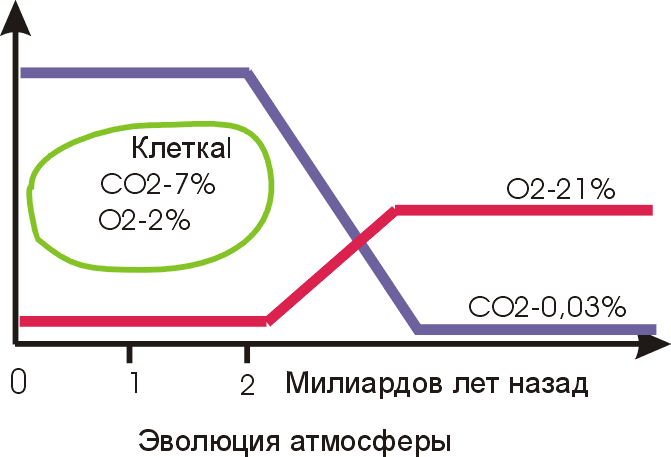
As can be seen from the above figure, the atmosphere consisted mainly of carbon dioxide several milliard years ago. this time period refers to the period of the origin of the living cell. Later due to the evolution of carbon dioxide of the atmosphere has been recycled into oxygen by plants. And currently we have a gas composition of the atmosphere much different from the original. But living cells of the body require the same gas composition to their normal zhiznideyatelnosti - 2% O2 and 7.5% CO2.

The first clause confirms the second picture. The mother's body nurturing the fetus creates conditions identical to the original. Gas composition in which the fetus is identical to the gas composition in the beginning of the evolution, thus are created ideal conditions for the development of the fetus. Being born, the child is a huge stress, because he finds himself in conditions that differ very much. Custom tight swaddle newborn babies were on a subconscious level from our ancestors. Tight zaparovanny child could raspisatsya. Modern medicine is doing everything to get newborns to breathe deeply and thereby ruining them.
2. The role of carbon dioxide in the body.
Carbon dioxide is necessary for the cells and oxygen. When one begins intense or deep breathing, the blood is saturated with oxygen. Carbon dioxide is flushed out of the body. In the absence of CO2 in blood, O2 binds very strongly with hemoglobin. Nature has arranged so that odavamalt of oxygen to the cells of the blood is reduced several times. The cell begins to experience oxygen starvation at high O2 saturation in the blood. Automatically triggered effect Verigo-Bora, opened in the beginning of the century. The gist of it is this: the Body tries to retain carbon dioxide because it is needed by the cells for their harmonious life, like oxygen. Occurs reflex spasm of the vessels, because it's just a defensive reaction to the loss of CO2 and the coming lack of oxygen. This spasm can occur anywhere on the body Cm. figure. (this is well proved with asthma) So carbon dioxide does in the body as a catalyst.
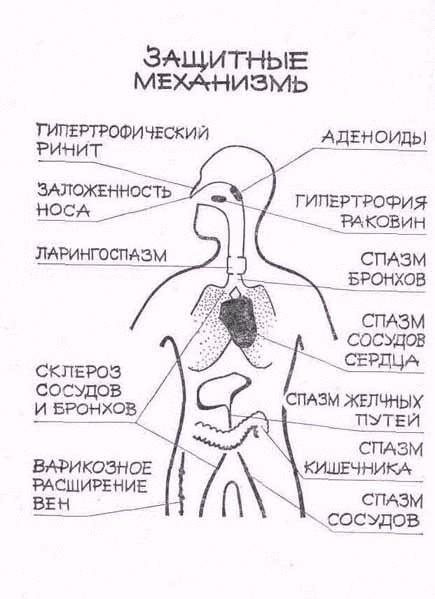
In addition to the spasmodic reactions in the body changes the acid-alkaline balance (PH). As a result, all biochemical reactions begin to flow improperly, waste products of the cells are removed completely. Hence the slagging of cells and diseases associated with metabolic disorders (diabetes, etc.).
3. The results of the research.
It was found that sick and healthy people breathe differently.
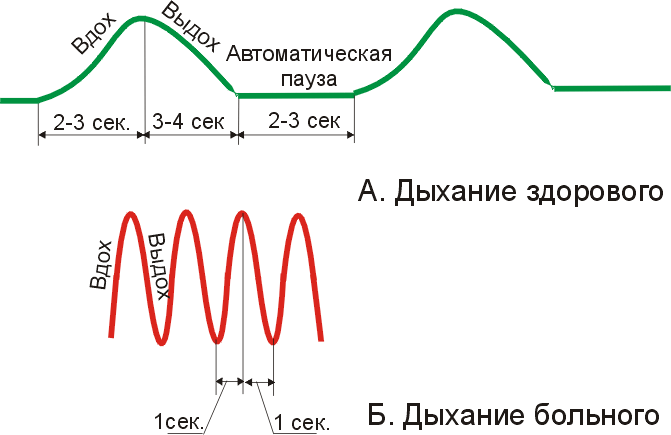
Breathing is regulated by respiratory center. Nature has arranged so that the respiratory center is driven not by carbon dioxide, and oxygen. In a normal person there is your usual level of oxygen in the blood.It is different from globaldiesel and healthy. When the concentration of carbon dioxide in the blood (breath, physical work) decreases the concentration of oxygen in the blood. The respiratory center gives a command to deepen the breathing so that the oxygen level remained usual. With the deepening of the breath from the blood removes carbon dioxide, which acts as a liaison between the cell and the oxygen in the hemoglobin.The body is experiencing oxygen starvation even more. There Is "A Vicious Circle". The deeper we breathe the more you want to breathe, the more experience oxygen starvation.
The key indicators of breathing and health in General-the Control Pause (CP) and Maximum Pause (MP).
KP is a delay of breathing performed after normal exhalation. The delay is easiest to first desire to breathe. This delay is KP. Before the measurement of the CP followed by 10 minutes of rest. After measuring neither the depth nor the frequency of respiration should not be more than before the measurement.
In the laboratory Buteyko was derived a mathematical relationship between CO2 concentration and time of KP.
MP includes KP plus some strong-willed delay. The conditions of measurement are the same as in KP. Usually MP is approximately two times larger than KP.
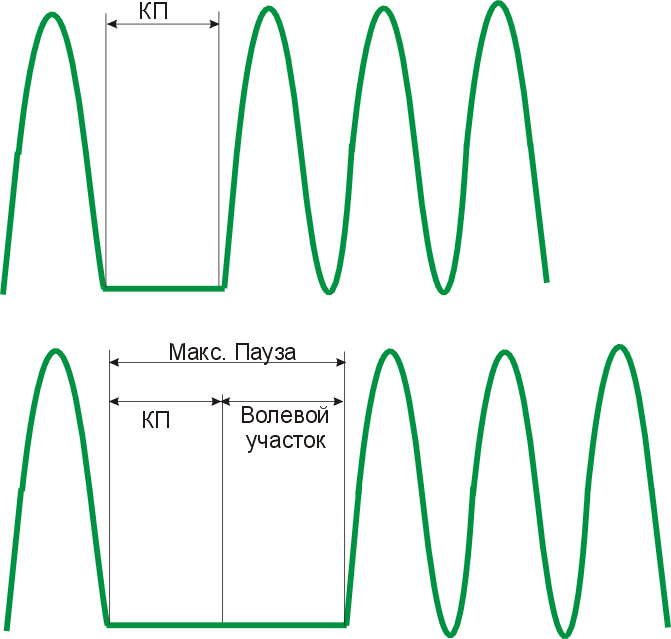
In the laboratory Buteyko developed a table on which to judge the respiration and human health.
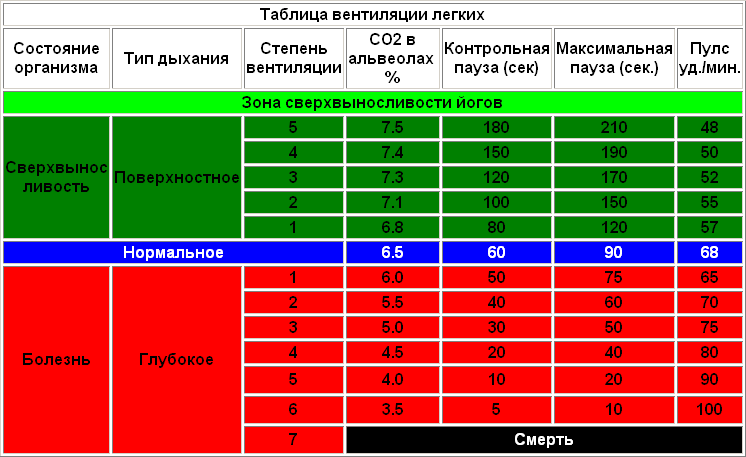
As the table shows, the death occurs when the concentration of carbon dioxide in the body less than 3.5 %. A normal healthy person has a control pause of 60 seconds. what ACC. 6.5 % CO2. As you know yoga can produce breath for tens of minutes. Area of survivalist yogis is higher than KP. 180 sec.
K. p. Buteyko developed a breathing technique that allows you to achieve the performance of survivalist. As you work on your breathing, the man raises the level of carbon dioxide in the body. His respiratory center gradually gets used to the increased concentration of carbon dioxide, and reduced oxygen content. The work of the respiratory center is normalized. The breath becomes less deep and more rare.
Parameters of breath: breathing depth, breathing frequency the automatic pause between exhale and inhale, pause control that all parameters of one function.
The growth of carbon dioxide, and therefore KP people get rid of their diseases. It soprovojdaetsya of sanogenesis. The reaction of sanogenesis is the reaction of purification, when the waste, toxins, and drugs removed from the cells of the body.
The following "Ladder of health" see what KP are certain disease.

Asthma occurs in most globalisasi people and is the very first. Having a KP less than 60 seconds. there is the possibility of developing the above diseases. (see list.)
For the first time in the history of medicine in the history of mankind was the definition of health.
A healthy person is a person having a KP less than 60 seconds.
Based on the materials of the trilogy, Altukhov S. A. "the opening of the Doctor Butenko".
The list of diseases
1. All types of allergies:
a) respiratory allergosis
b) polyvalent Allergy
in) laryngospasm (loss of voice)
d) allergic conjunctivitis
d) food allergies
f) allergic drug
g) false croup
h) pharyngitis
and) laryngitis
K) tracheitis
2. Asthmatoid bronchitis
3. Bronchial asthma
4. COPD (chronic nonspecific lung diseases):
a) chronic bronchitis
b) obstructive bronchitis
C) chronic pneumonia
d) bronchiectasis
d) pnevmoskleros
e) emphysema
g) silicosis, anthracosis, etc.
5. Chronic rhinitis
6. Vasomotor rhinitis
7. Sinusitis
8. Sinusitis
9. Sinusitis
10. Adenoids
11. Polyposis
12. Chronic rhinosinusopathy
13. Polypose (sandal horacka)
14. Angioedema
15. Urticaria
16. Eczema, including:
a) atopic dermatitis
b) psoriasis
C) diathesis
d) Vitiligo
d) ichthyosis
e) acne vulgaris
17. Reiyo disease (spasm of vessel upper extremities)
18. Obliteriruushih disease
19. Varicose veins
20. Thrombophlebitis
21. Hemorrhoids
22. Hypotension
23. Hypertension
24. Vegetative-vascular dystonia (VVD)
25. Congenital heart defects
26. Articular rheumatism
27. Rheumatic heart disease
28. Diencephalic syndrome
29. Coronary heart disease (CHD)
30. Chronic IBS
a) angina at rest and stress
b) myocardial infarction
31. Rhythm disorders of the heart
a) tachycardia
b) arrythmia
C) paroxysmal tachycardia
d) atrial fibrillation
32. Atherosclerosis common
33. Arachnoiditis (post-traumatic, flu, etc.)
34.Postipuuntie state
a) paralysis
b) paresis
35. Parkinson's disease (initial form)
36. Hypothyroidism
37. Hyperthyroidism
38. Graves ' disease
39. Diabetes mellitus
40. The menstrual cycle
41. Toxemia of pregnancy
42. Pathologic menopause
43. Cervical erosion
44. Fibroids
45. Fibrous (diffuse) breast
46. Infertility
47. Impotence
48. Threatening miscarriage
49. Radiculitis
50. Osteochondrosis
51. Exchange polyarthritis
52. Rheumatoid polyarthritis
53. Syndrome Dupuytren's (contracture tendon brush)
54. Gout
55. Pyelonephritis
56. Glomerulonephritis
57. Nocturia (bedwetting)
58. Cystitis
59. Urolithiasis
60. Obesity of all degrees
61. Lipomata
62. Chronic gastritis
63. Chronic cholecystitis
64. A dyskinesia of a biliary tract
65. Chronic pancreatitis
66. Zhelchekamennaya disease
67. Peptic ulcer 12 duodenal ulcer
68. Spastic colitis
69. Peptic ulcer disease
70. Multiple sclerosis
71. Epicypta (epilepsy) is seizures
72. Schizophrenia (initial stage)
73. Collagenosis (scleroderma, systemic boundary erythematosus — SLE, dermatomiozit)
74. Glaucoma
75. Cataract
76. Strabismus
77. Farsightedness
78. Radiation sickness published
P. S. And remember, only by changing their consumption — together we change the world! ©
Join us in Facebook and in Vkontakte, and we're Classmates
Source: poselenie.ucoz.ru/publ/dykhanie_po_metodike_butejko/4-1-0-556
The technique for shallow breathing has been developed in Novosibirsk by Dr. Konstantin Pavlovich Buteyko in the 1960-ies. Its basic principle is that modern man is "over-exercised" in deep breath, and why does the majority of diseases associated with various spasms due to lack of carbon dioxide in the body. This primarily refers to bronchial asthma.
According to Buteyko, "propaganda" deep breathing causes great harm. The logic in his words is undeniable. "How would you react to a doctor who would tell you to "Eat more"? says Buteyko. – Probably would have considered him crazy. Why any one function of the body must suddenly increase?"

As with food, the breath also we must distinguish between two levels: respiration as the process that takes place between the organism and the environment, and cellular respiration, that is a purely internal process. How would and what man would not breathe, oxygen in the red blood cells can still be high 96-98 %. In all other cells of the organism contains only 2 % oxygen. In the air (any) oxygen is more than enough – 21 %.
But in the cells must contain up to 7% carbon dioxide, and in air it is only 0,03 %.
With a deficit of carbon dioxide in the blood oxygen is so strongly connected with hemoglobin that is not supplied to the cells and tissues. The asthmatic oxygen, despite the fact that oxygen in your blood even more than a healthy person. Asthma attack is (like almost any symptom of any disease) adaptive response of the body. The body "wants" to breathe, because if the content of carbon dioxide in the cells falls below 3%, he will die. Asthma attack is a forcible breath, as a result of which the content of carbon dioxide increases dramatically.
K. P. Buteyko and his colleagues have developed a method by which each person can determine the depth of your breathing and, therefore, the degree of health or illness. The method consists in the following. Sit on a chair with a straight back, do not strain and breathe as you breathe normally, no deep breaths. Make a normal exhale and stop breathing, noticing the time on the tick of the clock hours. The longer a person can withstand without voltage this pause, the "normal" he breathes. This files most often have "more or less healthy" people, this pause is in the range of 15 – 20 seconds patients it less.
But the really healthy can consider himself the only one who is without stress delays 60 seconds and without any discomfort.
Currently, the indication for the use of wlgd is a syndrome of hyperventilation – deep breathing and CO2 deficiency in the lungs.
Before you start treatment with this method, it is necessary to conduct a test with deep breathing. The patient with bronchial asthma during an asthma attack is encouraged to breathe very shallow, with pauses lasting 3 to 4 seconds after each exhalation. According to the observations of K. P. Buteyko, a maximum of 5 minutes of choking is reduced or disappears. Then offer the patient again to deepen the breath. If, in response to an in-depth breathing condition is worsening, while shallow breathing is improved, then the test with deep breathing is considered positive. Such patients can be cured by the method VLGD.
Breathing method
First, you need to understand what "normal breathing". Normal breathing, Buteyko says, "not seen and not heard". Breath – slow, maximum surface, lasting 2-3 seconds; exhale calm, complete, for 3 to 4 seconds; after you exhale, be sure a respiratory pause of 3-4 seconds, then inhale, etc. the Frequency of normal breathing 6-8 breaths per minute.
To learn shallow breathing, need to practice at least 3 hours a day, first at rest, then in motion. Training is that the effort will reduce the depth of inhalation, breathing "surface," or, in the words of the first patients Buteyko, "samoderzhets".
As for the frequency of respiration, as well as auto pause (required phases of a normal breath), here's what he says about it himself K. P. Buteyko: "the First cardinal error of our patients – they begin to rarely breathe: inhale-exhale, then hold your breath longer hold this pause and deepen your breath. Not to be confused with the maximum pause with automatic. The breathing frequency is strictly individual, it depends on the gender, age, weight, etc. and usually not controlled. We do not allow patients to think about it, otherwise they will be implicated. Respiratory rate, we only need to measure the carbon dioxide content – it, just like the maximum pause, shows how much carbon dioxide in the blood...
The last indicator – automatic pause. This is a pause that occurs even in normal breathing of people in sleep, and all animals. It is easy to show animals. Here is a dog or a cat is lying, breathing normally (no dyspnea) — will keep an eye on her breathing. On the exhale, the chest fell – pause, then inhale, small exhale, pause. This is normal breathing. This pause – stop breathing – it is a stay easy and the possibility of gas exchange. This is a normal pause that occurs automatically, independently of our consciousness. "Globalisasi" people do not, so they think this is not necessary. They need to reduce the amplitude and the pause will come itself when the breath will be reduced..." (From the transcript of the lecture by K. P. Buteyko, read them at the University of Moscow in December 1969)
Practicing according to the method VLGD, periodically should do the above test to the maximum pause (breath-hold), as the only way to control the correct execution of the technique.
Modern medicine has centuries of experience. She originates from such well-known figures as Hippocrates and Avicenna. Their contribution to the "piggy Bank" of medical theory and practice is huge. Time passed, changed the description of diseases and the approach to their treatment. Many diseases that were considered incurable, changed their status and began to succumb to the therapy. But there are diseases to which medicine remained powerless: asthma, high blood pressure, allergies, angina, etc. In the best case, the doctors just "hooked" patient on medication and seek temporary relief. Patients looking for a way out themselves. Input are all methods, traditional and non traditional. Such non-traditional methods of treatment of chronic and difficult treatment of disease is a breathing method Buteyko, Konstantin Pavlovich. It has nothing to do with breathing exercises, and focused only on the change in the depth of breathing during exercise.
In the 60-ies of the last century, the Soviet scientist K. P. Buteyko has made a discovery that turned the notion of reserve capacity of the organism in the treatment of chronic diseases. It lies in the fact that when the disease disturbed the balance of oxygen and carbon dioxide in the body. K. P. Buteyko believed that people forgot "how to breathe correctly". He proved that the deeper his breathing, the movement, the more severe the disease. Conversely, the breath of the bole surface, the faster the recovery. The fact is that deep breathing from the body to excreted carbon dioxide, this leads to spasm of cerebral vessels, bronchi, intestine, biliary tract, decreases the supply of oxygen to the tissues. Practice breathing method Buteyko gives very good positive results in such situations with regular exercises and always under the supervision of a physician.
Allow the entire method, I will not, written about him the whole book. It is described how to train the Buteyko breathing exercises for this. Will mention only some basic aspects that everyone should know the patient, who decided to take care of your health. Consider, what's the point concludes the breathing method Buteyko's scheme, the technique of its application.
• we need to prepare for systematic training for a long time;
• learn once and for all, the lifestyle will need to change completely;
• with regard to a life of drugs, their dosage is reduced gradually;
What is the method?
From the point of view of K. P. Buteyko only because of the diaphragm, the person may not breathe deeply, gradually decreasing depth. You should breathe only through the nose, then it will be correct. Breath is necessary to do a very small, quiet and not noticeable, while the abdomen and chest should not rise. Through this breath the air, falls just to the collarbone, and below them is carbon dioxide. The air needs a little drawn into themselves, in order not to suffocate. A person must create the impression as if he is afraid to smell. Breath should last no longer than 2-3 seconds and exhale over 3 to 4 seconds followed by a pause of about 4 seconds. The volume of the exhaled air should not be large. Here is the diagram of the breathing on Buteyko.
Breathing technique Buteyko
• sit on a chair and relax completely, a look of silent lift above the line of the eye;
• relax your diaphragm and shallow breathing until a feeling of lack of air in the chest;
• continue respiratory movements in this rate and not increase it for 10-14 minutes;
• if you have the desire to breathe in deeper, you can only slightly increase the depth of respiration, but in any case the entire breast;
• with proper training, You will feel the beginning heat all over the body, then there will be a feeling of heat and the irresistible desire to breathe deeply, to fight this need only by relaxing the diaphragm;
• out of the workout should gradually increasing depth of breathing;
The duration of one workout and its frequency depend on the condition of the patient and the degree of respiratory failure. It can only identify a doctor who is familiar with the practice and theory, how to apply breath, the Buteyko method, because the method has contraindications.
As determined by the degree of respiratory failure?
Measured by the ratio of the "control pause" and pulse. This will need a watch with a second hand. Count your pulse, then for ten minutes to align the breathing. Then sit straight, take a good posture and straighten your shoulders, pull your stomach. Then take a free breath, after it happens independent of the exhalation. At the same time look fix the position of the second hand and hold your breath. During the measurement period need to look away from the second hand, moving his gaze to another point or to cover his eyes. You can't breathe out until the feeling of "boost diaphragm", tension of the abdominal muscles and neck. At this point, look at the position of the seconds hand and not take a deep breath and gradually adjust the breath.

Results:
• breath more than 40 seconds, and a pulse of 70 heartbeats per min, or less. – You are sick;
• 20-40 seconds, and the pulse 80 beats per min – first stage of the disease;
• 10-0 seconds, pulse 90 beats. min – the second stage;
• less than 10 minutes – the third stage of the disease;
To be treated, using the method of breathing by Buteyko difficult. And although the breathing technique Buteyko's not complicated, but its application is enormous work for both the patient and the doctor. From the patient requires tremendous willpower and patience, especially in the first days of training. As practice shows, at the beginning of treatment in almost all patients was observed exacerbation of the underlying disease, it is necessary to know and be ready for all the symptoms.
Through the regular practice many people have improved their overall health or even get rid of chronic diseases. But to begin classes impossible. Conduct training need only after a complete examination, and always under the supervision of a physician familiar with the technique of breathing on Buteyko.
If you want to learn about the method, the explanation of why it is useful the Buteyko breathing watch the video:
The breathing method Buteyko
The basics carbon dioxide theory of breath K. p. Buteyko
1. Evolution of the atmosphere.

As can be seen from the above figure, the atmosphere consisted mainly of carbon dioxide several milliard years ago. this time period refers to the period of the origin of the living cell. Later due to the evolution of carbon dioxide of the atmosphere has been recycled into oxygen by plants. And currently we have a gas composition of the atmosphere much different from the original. But living cells of the body require the same gas composition to their normal zhiznideyatelnosti - 2% O2 and 7.5% CO2.

The first clause confirms the second picture. The mother's body nurturing the fetus creates conditions identical to the original. Gas composition in which the fetus is identical to the gas composition in the beginning of the evolution, thus are created ideal conditions for the development of the fetus. Being born, the child is a huge stress, because he finds himself in conditions that differ very much. Custom tight swaddle newborn babies were on a subconscious level from our ancestors. Tight zaparovanny child could raspisatsya. Modern medicine is doing everything to get newborns to breathe deeply and thereby ruining them.
2. The role of carbon dioxide in the body.
Carbon dioxide is necessary for the cells and oxygen. When one begins intense or deep breathing, the blood is saturated with oxygen. Carbon dioxide is flushed out of the body. In the absence of CO2 in blood, O2 binds very strongly with hemoglobin. Nature has arranged so that odavamalt of oxygen to the cells of the blood is reduced several times. The cell begins to experience oxygen starvation at high O2 saturation in the blood. Automatically triggered effect Verigo-Bora, opened in the beginning of the century. The gist of it is this: the Body tries to retain carbon dioxide because it is needed by the cells for their harmonious life, like oxygen. Occurs reflex spasm of the vessels, because it's just a defensive reaction to the loss of CO2 and the coming lack of oxygen. This spasm can occur anywhere on the body Cm. figure. (this is well proved with asthma) So carbon dioxide does in the body as a catalyst.

In addition to the spasmodic reactions in the body changes the acid-alkaline balance (PH). As a result, all biochemical reactions begin to flow improperly, waste products of the cells are removed completely. Hence the slagging of cells and diseases associated with metabolic disorders (diabetes, etc.).
3. The results of the research.
It was found that sick and healthy people breathe differently.

Breathing is regulated by respiratory center. Nature has arranged so that the respiratory center is driven not by carbon dioxide, and oxygen. In a normal person there is your usual level of oxygen in the blood.It is different from globaldiesel and healthy. When the concentration of carbon dioxide in the blood (breath, physical work) decreases the concentration of oxygen in the blood. The respiratory center gives a command to deepen the breathing so that the oxygen level remained usual. With the deepening of the breath from the blood removes carbon dioxide, which acts as a liaison between the cell and the oxygen in the hemoglobin.The body is experiencing oxygen starvation even more. There Is "A Vicious Circle". The deeper we breathe the more you want to breathe, the more experience oxygen starvation.
The key indicators of breathing and health in General-the Control Pause (CP) and Maximum Pause (MP).
KP is a delay of breathing performed after normal exhalation. The delay is easiest to first desire to breathe. This delay is KP. Before the measurement of the CP followed by 10 minutes of rest. After measuring neither the depth nor the frequency of respiration should not be more than before the measurement.
In the laboratory Buteyko was derived a mathematical relationship between CO2 concentration and time of KP.
MP includes KP plus some strong-willed delay. The conditions of measurement are the same as in KP. Usually MP is approximately two times larger than KP.

In the laboratory Buteyko developed a table on which to judge the respiration and human health.

As the table shows, the death occurs when the concentration of carbon dioxide in the body less than 3.5 %. A normal healthy person has a control pause of 60 seconds. what ACC. 6.5 % CO2. As you know yoga can produce breath for tens of minutes. Area of survivalist yogis is higher than KP. 180 sec.
K. p. Buteyko developed a breathing technique that allows you to achieve the performance of survivalist. As you work on your breathing, the man raises the level of carbon dioxide in the body. His respiratory center gradually gets used to the increased concentration of carbon dioxide, and reduced oxygen content. The work of the respiratory center is normalized. The breath becomes less deep and more rare.
Parameters of breath: breathing depth, breathing frequency the automatic pause between exhale and inhale, pause control that all parameters of one function.
The growth of carbon dioxide, and therefore KP people get rid of their diseases. It soprovojdaetsya of sanogenesis. The reaction of sanogenesis is the reaction of purification, when the waste, toxins, and drugs removed from the cells of the body.
The following "Ladder of health" see what KP are certain disease.

Asthma occurs in most globalisasi people and is the very first. Having a KP less than 60 seconds. there is the possibility of developing the above diseases. (see list.)
For the first time in the history of medicine in the history of mankind was the definition of health.
A healthy person is a person having a KP less than 60 seconds.
Based on the materials of the trilogy, Altukhov S. A. "the opening of the Doctor Butenko".
The list of diseases
1. All types of allergies:
a) respiratory allergosis
b) polyvalent Allergy
in) laryngospasm (loss of voice)
d) allergic conjunctivitis
d) food allergies
f) allergic drug
g) false croup
h) pharyngitis
and) laryngitis
K) tracheitis
2. Asthmatoid bronchitis
3. Bronchial asthma
4. COPD (chronic nonspecific lung diseases):
a) chronic bronchitis
b) obstructive bronchitis
C) chronic pneumonia
d) bronchiectasis
d) pnevmoskleros
e) emphysema
g) silicosis, anthracosis, etc.
5. Chronic rhinitis
6. Vasomotor rhinitis
7. Sinusitis
8. Sinusitis
9. Sinusitis
10. Adenoids
11. Polyposis
12. Chronic rhinosinusopathy
13. Polypose (sandal horacka)
14. Angioedema
15. Urticaria
16. Eczema, including:
a) atopic dermatitis
b) psoriasis
C) diathesis
d) Vitiligo
d) ichthyosis
e) acne vulgaris
17. Reiyo disease (spasm of vessel upper extremities)
18. Obliteriruushih disease
19. Varicose veins
20. Thrombophlebitis
21. Hemorrhoids
22. Hypotension
23. Hypertension
24. Vegetative-vascular dystonia (VVD)
25. Congenital heart defects
26. Articular rheumatism
27. Rheumatic heart disease
28. Diencephalic syndrome
29. Coronary heart disease (CHD)
30. Chronic IBS
a) angina at rest and stress
b) myocardial infarction
31. Rhythm disorders of the heart
a) tachycardia
b) arrythmia
C) paroxysmal tachycardia
d) atrial fibrillation
32. Atherosclerosis common
33. Arachnoiditis (post-traumatic, flu, etc.)
34.Postipuuntie state
a) paralysis
b) paresis
35. Parkinson's disease (initial form)
36. Hypothyroidism
37. Hyperthyroidism
38. Graves ' disease
39. Diabetes mellitus
40. The menstrual cycle
41. Toxemia of pregnancy
42. Pathologic menopause
43. Cervical erosion
44. Fibroids
45. Fibrous (diffuse) breast
46. Infertility
47. Impotence
48. Threatening miscarriage
49. Radiculitis
50. Osteochondrosis
51. Exchange polyarthritis
52. Rheumatoid polyarthritis
53. Syndrome Dupuytren's (contracture tendon brush)
54. Gout
55. Pyelonephritis
56. Glomerulonephritis
57. Nocturia (bedwetting)
58. Cystitis
59. Urolithiasis
60. Obesity of all degrees
61. Lipomata
62. Chronic gastritis
63. Chronic cholecystitis
64. A dyskinesia of a biliary tract
65. Chronic pancreatitis
66. Zhelchekamennaya disease
67. Peptic ulcer 12 duodenal ulcer
68. Spastic colitis
69. Peptic ulcer disease
70. Multiple sclerosis
71. Epicypta (epilepsy) is seizures
72. Schizophrenia (initial stage)
73. Collagenosis (scleroderma, systemic boundary erythematosus — SLE, dermatomiozit)
74. Glaucoma
75. Cataract
76. Strabismus
77. Farsightedness
78. Radiation sickness published
P. S. And remember, only by changing their consumption — together we change the world! ©
Join us in Facebook and in Vkontakte, and we're Classmates
Source: poselenie.ucoz.ru/publ/dykhanie_po_metodike_butejko/4-1-0-556
A little lesson for the future —an essay written blog shortly before departure from life
Amaranth— healing properties, recipes and use



